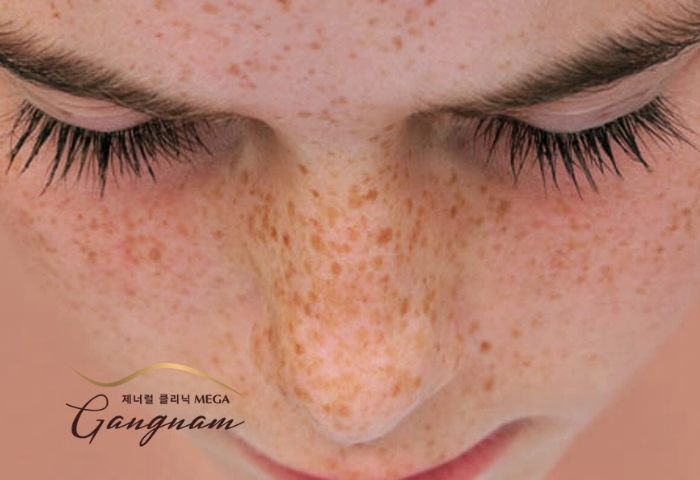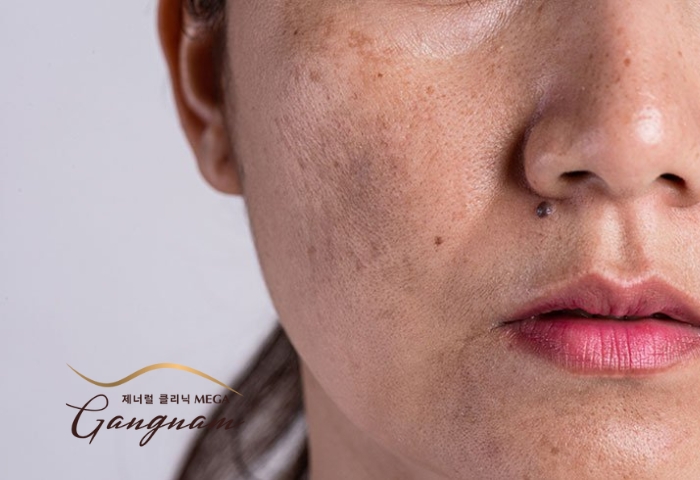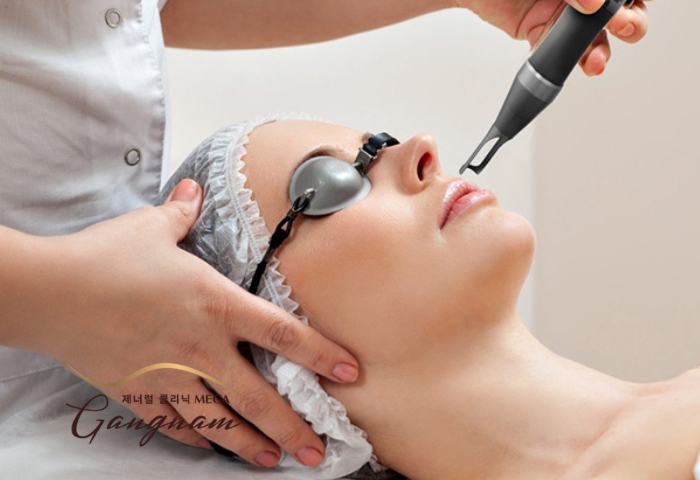What is skin pigmentation disorder? Can it be completely treated?
Have you ever wondered why our skin color is different from those around us? Most people will explain this as related to race, genetics, living environment… In fact, these causes are completely correct, skin color is influenced by countless factors.
These factors contribute to determining skin pigmentation on the human body and are likely to change over time. Therefore, there are cases where the skin becomes whiter or darker thanks to the intervention of internal or external forces. However, if the skin condition changes abnormally and quickly, this is likely a sign of a skin pigmentation disorder. That causes negative aesthetic effects. Therefore, we will provide you with information on how to care and restore your skin below!

What to do if you have a skin pigmentation disorder?
What is skin pigmentation disorder?
Skin pigmentation disorders are a group of diseases related to the activity of melanin pigments on the skin surface. This phenomenon includes pigmentation problems such as increase, decrease or loss of pigment. Accordingly, one or several areas of the body will have the skin become lighter, darker or turn white and light pink. Symptoms of pigmentation disorders can occur in anyone, at any age, but are more common and easily recognizable in people with darker skin.
Skin pigmentation disorders can be divided into three main categories:
- Hyperpigmentation disorder: This phenomenon is accompanied by the appearance of spots or patches of skin becoming darker than other normal areas. This condition appears more often on the face, neck, arms and legs, places that are not carefully covered or frequently exposed to sunlight. Typical examples of hyperpigmentation in the skin are melasma, freckles, age spots…
- Hypopigmentation disorder: The phenomenon of hypopigmentation often lasts for a certain period of time.
- Accordingly, skin color becomes lighter than normal. Hypopigmentation disorders are often caused by skin diseases, poisoning or side effects of medications. Symptoms of hypopigmentation disorders can occur in any area, depending on the specific cause.
- Depigmented skin disorder: Depigmented skin is when the original color gradually changes to a very light color or completely pale white. The main causes of depigmented skin are mainly genetics, skin diseases or congenitally depigmented skin. The area of depigmentation can be on the face, neck, arms, legs or the entire skin. Diseases showing typical loss of skin pigment such as: vitiligo, albinism…
Diagnosis of skin pigmentation disorders requires a full health examination and diagnosis to learn about the patient’s medical history, genetic factors, and symptoms. In some cases, your doctor will order additional tests such as blood tests, urine tests, or skin tests. Treatment of skin pigmentation disorders depends on the cause and the body’s ability to recover.
Causes of skin pigmentation disorders
Skin pigmentation disorders originate from many different causes. These can be internal factors or influences from the surrounding environment or external forces. Understanding the specific cause helps us quickly find methods to control symptoms and provide thorough treatment. Studies have shown the following specific causes:

Common causes of skin pigmentation disorders
Genetic:
Some hereditary skin pigmentation disorders originate from a deficiency or absence of melanin produced by melanocytes. These cases can be classified into a group of diseases related to genetic mutations in OCA1, OCA2 or genes involved in melanin production. These people often exhibit fair skin and white hair, and blue or gray eyes depending on the specific race.
Impact of UV rays:
Ultraviolet rays contained in sunlight or light-emitting electronic devices can create stimuli that disrupt melanin production. The most specific symptoms caused by this condition are melasma, freckles… Initially, these signs may not be too obvious, but after a while the intensity of pigmentation will increase and be extremely easy to recognize. know.
Hormonal changes:
Hormonal changes during pregnancy, perimenopause, menopause or use of hormonal drugs can cause skin pigmentation disorders. This condition originates from specific hormones estrogen and androgen. Estrogen disorders often appear in women during pregnancy or when using certain inhibitors. Androgens occur in both sexes and depend on different factors.
Hormonal diseases:
Some hormonal diseases such as thyroid disease and Addison’s disease can cause hypopigmentation disorders. Overactive thyroid disease is a condition in which the thyroid gland produces too much of the hormone thyroxine, causing increased melanin production. Addison’s disease is a condition in which the adrenal glands do not produce enough corticosteroid hormones, causing a marked decrease in melanin production.
Drugs and chemicals:
Some drugs and chemicals can cause pigmentation disorders, affecting melanin production or melanin distribution in the skin. Medications include the antibiotics tetracycline and sulfonamides, the anticonvulsants phenytoin and carbamazepine, and some anticancer drugs used in the treatment of skin cancer. Chemicals include hydroquinone, a number of skin whitening agents used in beauty products.
Bacteria and fungi:
Fungi and bacteria can cause pigmentation disorders by producing toxic substances that damage skin cells or affect melanin production. The most typical example causes pigmentation disorders such as tinea versicolor…
Environmental impact:
In addition to sunlight, other harmful environmental factors such as water and air pollution can also cause pigmentation disorders. Although the level of impact is not too high, long-term exposure to environments like this (which may contain lead and mercury) can easily cause the skin to lose pigment.
Can skin pigmentation disorders be treated??

Skin cell pigmentation disorders can be treated to some extent
In fact, the ability to treat pigmentation disorders depends mainly on the cause of formation and the level of skin damage. In particular, the phenomenon of increased pigmentation is easier to treat than decreased or lost pigmentation. Because hyperpigmentation often originates from abnormal hormonal changes and the influence of the surrounding environment. These are all problems that we can intervene and change slowly. Meanwhile, reducing pigmentation will be more difficult because it is often related to skin diseases, use of drugs or chemicals. If you want to use pigment, you need to apply modern techniques and machinery. At the same time, the level of skin recovery depends on other objective factors.
As for depigmentation, only a few cases can be treated if it is related to cosmetics, mild chemicals or skin diseases. Experts will apply special methods to intervene and influence the melanin production process to balance skin color. However, recovery cannot reach 100%, so patients need to be careful. In addition, symptoms of depigmentation related to genetics and congenital appearance cannot be treated at all because the area of appearance is too large. At the same time, experts and doctors have not found a method that can change the mechanism of melanin in these patients (vitiligo, albinism).
How to treat pigmentation disorders?
To treat syndromes related to skin pigmentation disorders, we need to follow the instructions of a specialist. However, these are not simple diseases and many symptoms can appear at the same time. Some of the most scientific treatment methods are:

Methods to reduce signs of pigmentation disorders on the skin
Hyperpigmentation disorder
Use of anti-pigmentation drugs: Drugs such as hydroquinone, tretinoin, corticosteroids are prescribed in different cases to inhibit melanin production in skin cells.
Treatment with light technology: Cosmetic methods using high-intensity light technology are applied to destroy skin cells that are too pigmented. Creates conditions for new cells to appear with completely normal pigmentation.
Hypopigmentation disorder
Use of melanin production stimulants: Special medications such as minoxidil, tretinoin and psoralen are prescribed with the purpose of stimulating melanin production in a specific area. Used in cases of hypopigmentation due to damage or skin diseases.
Laser treatment: Lasers can also be used to stimulate pigment production in skin cells. In fact, this method has a quite strong destructive mechanism and is applied in many cases.
Loss of pigmentation disorder
There is no complete treatment for depigmentation disorder. However, temporary methods can reduce the appearance of depigmented skin areas such as pigment inhibitors, topical creams, injections or color resurfacing lasers.
Before starting any treatment, we also recommend that you consult a dermatologist for specific advice and follow instructions. This is to ensure health safety and prevent unnecessary risks.
Above is our article to provide in-depth information about skin pigmentation disorders. If you have any questions, please contact Mega Gangnam via Hotline: 093.770.6666 for immediate advice and support!













